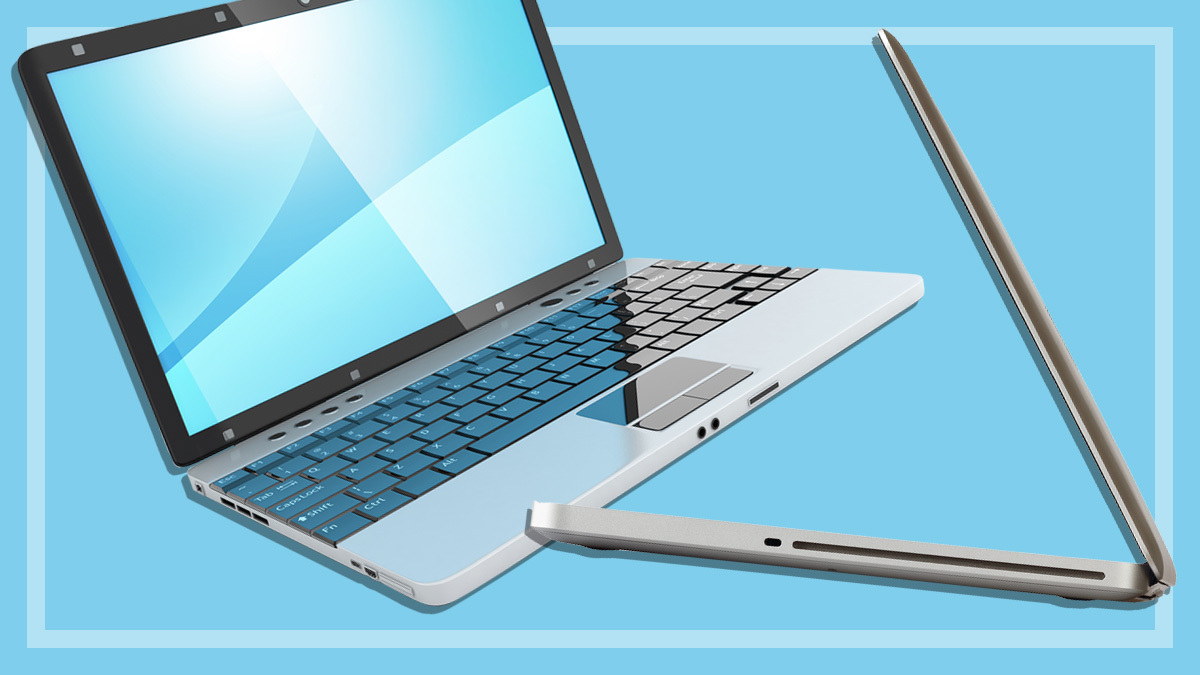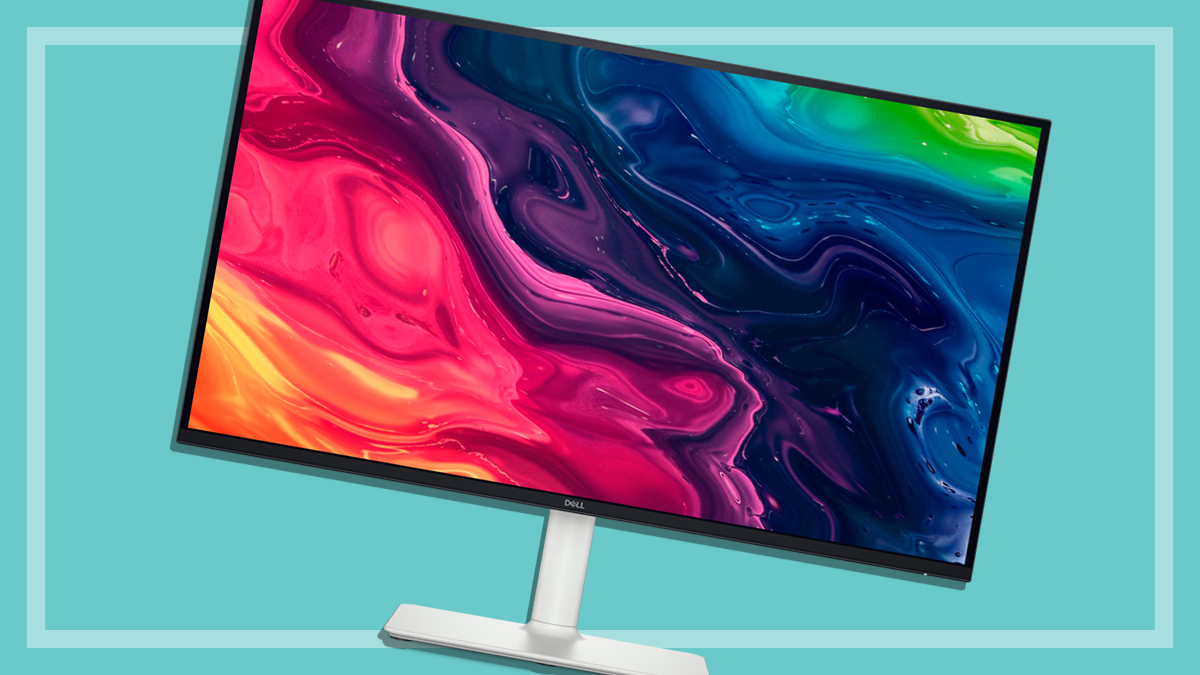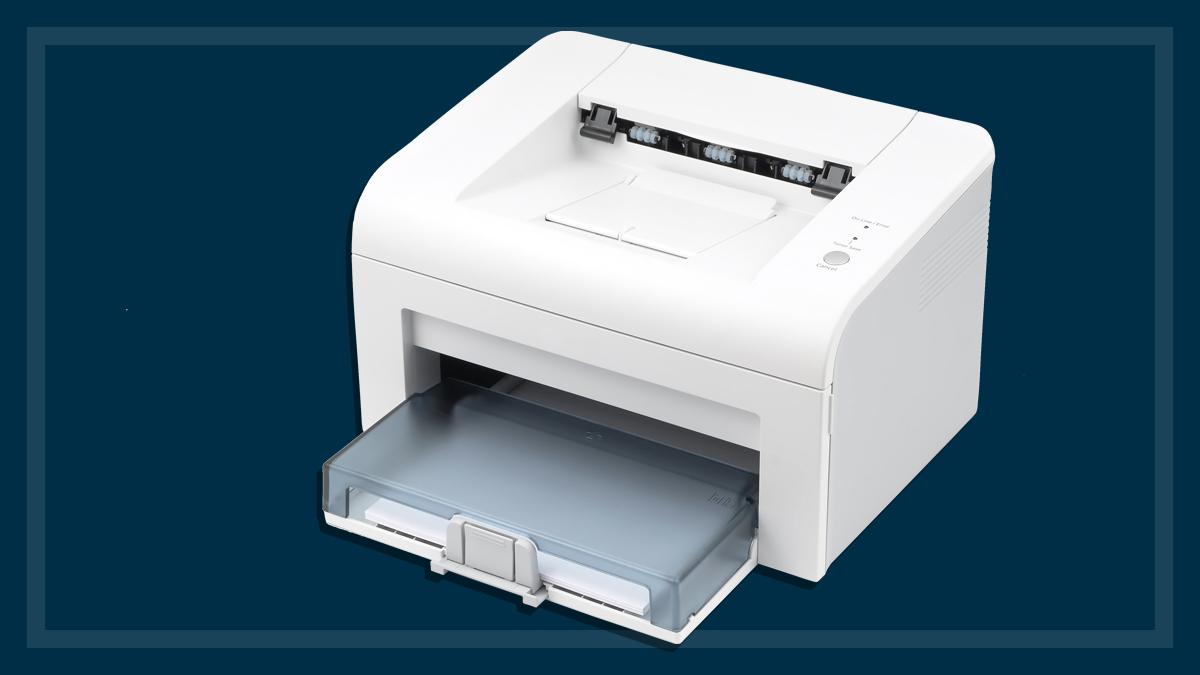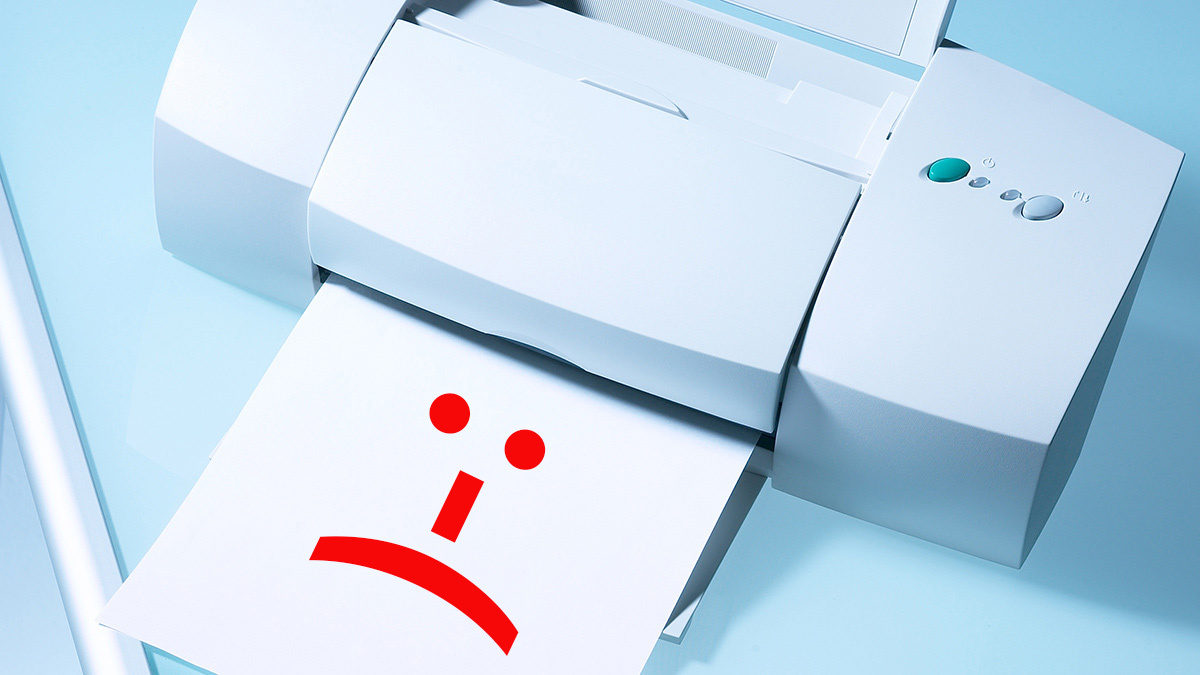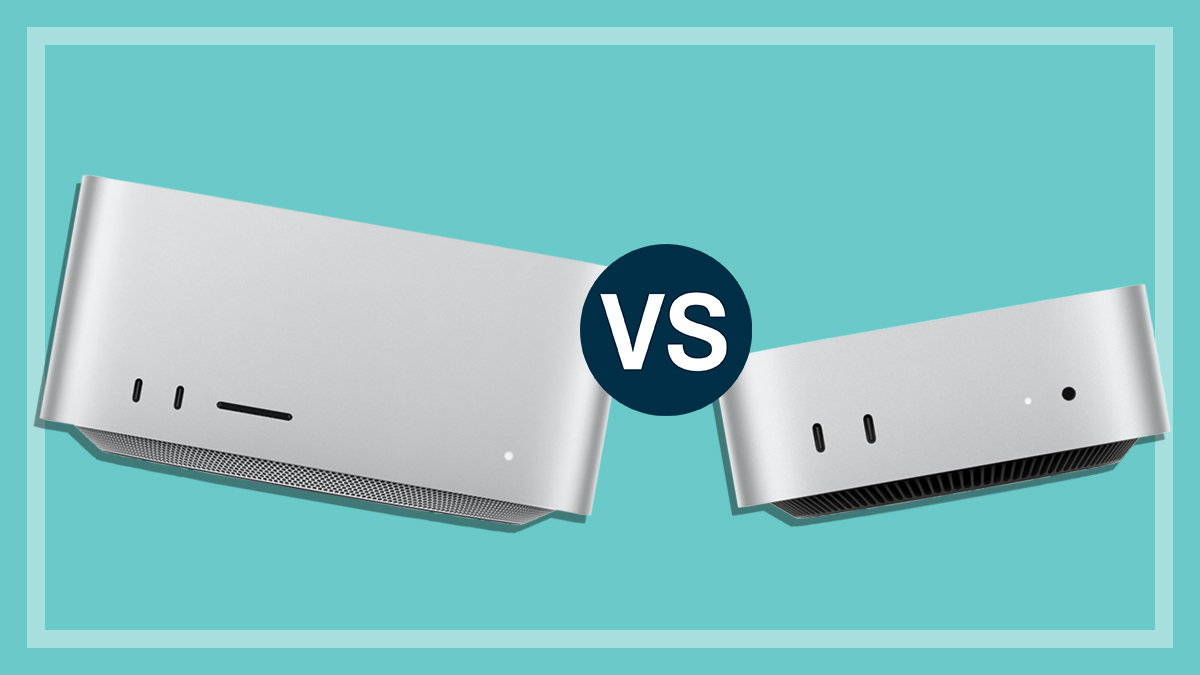Get our independent lab tests, expert reviews and honest advice.
Asus ZenBook Pro Duo laptop review
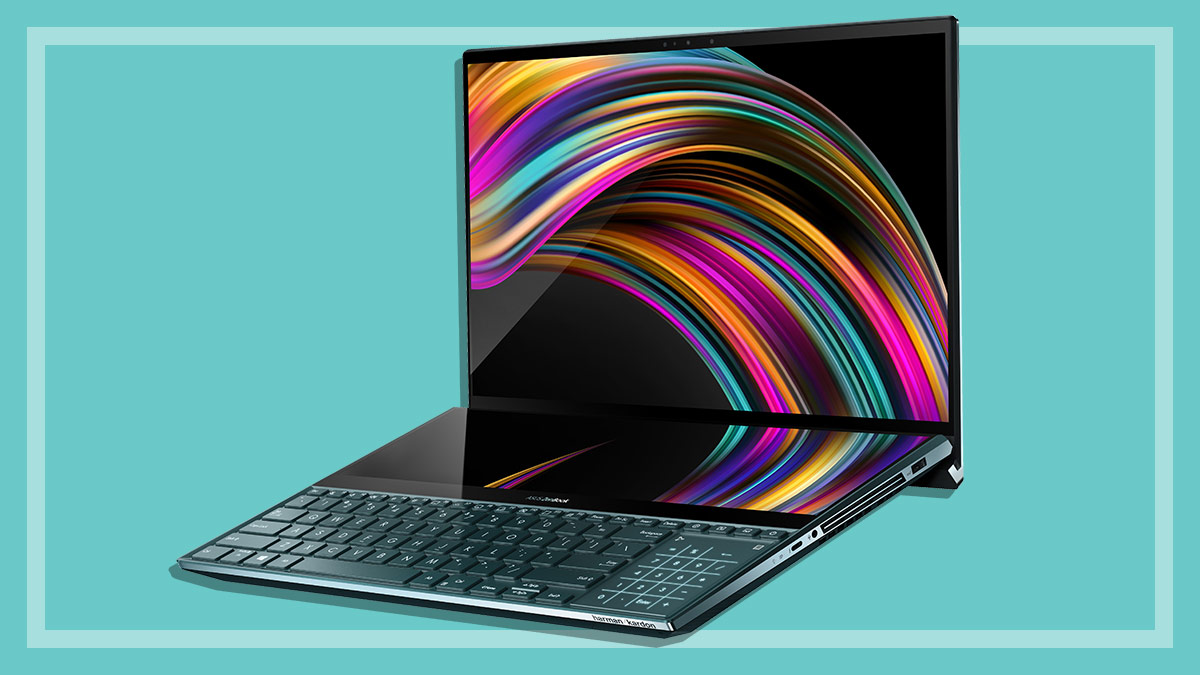
CHOICE verdict
The Asus ZenBook Pro Duo gives you two built-in screens working together seamlessly. The top-end 15.6-inch Pro model is a serious desktop replacement that will appeal to creative professionals and enthusiasts and gamers alike, but at a premium price. There’s also a more wallet-friendly, but still dual-screen, 14-inch model, called the ZenBook Duo.
Price: From $4499
Contact:
asus.com/auAbout shopping links on our website
Dual screens are not just for the desktop anymore. While the Asus ZenBook Pro Duo isn’t the first dual-screen laptop we’ve seen, it’s the boldest and best example of where laptops are headed. The ZenBook Pro Duo gives you a main screen and a sizeable secondary screen which work together seamlessly.
The ZenBook Pro Duo sets a new benchmark for laptop performance in our testing
We tested the top-line 15.6-inch Intel Core i9 version of this innovative laptop courtesy of Asus and found it to be a serious desktop replacement with an impressive combination of all the latest features and connections, plus more than enough processing and graphics grunt for any task.
Specs
There’s plenty of power in our test model’s eight-core Intel Core i9 processor, 32GB RAM, gaming-class NVIDIA GeForce RTXTM 2060 graphics and high-speed SSD (solid state drive) storage. In fact, the ZenBook Pro Duo sets a new benchmark for laptop performance in our testing, topping the previous best laptop scores for CPU, graphics, storage, and Wi-Fi. The wireless networking is the latest Wi-Fi 6 (802.11ax) and it has Bluetooth 5.0.
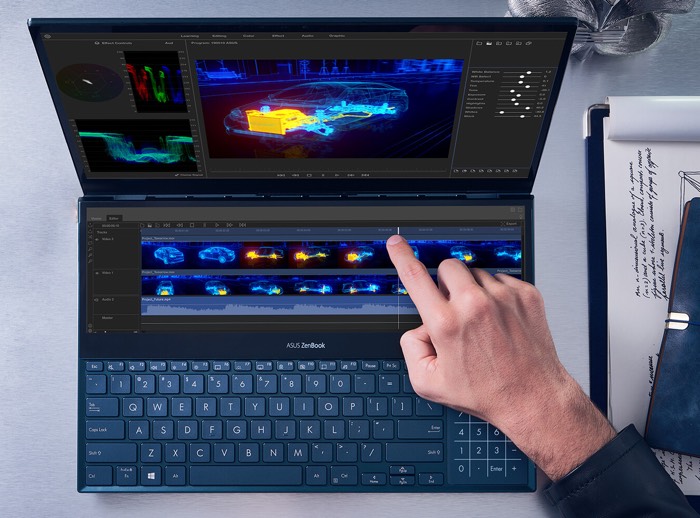
Versatile screens
The 14-inch secondary screen, called ScreenPad Plus, has a resolution of 3840 x 1100 pixels, and extends the workspace provided by the 15.6-inch main screen, an OLED 4K (3840 x 2160 pixels) 16:9 touchscreen.
A shortcut key above the touchpad enables/disables the secondary display, which has a soft menu for you to adjust brightness, launch apps, and even configure ‘task groups’ that can launch apps that have been previously saved in a particular layout on both screens. Another shortcut key can send apps launched on the second screen up to the main screen, and back down again.
The included Asus Pen active stylus for handwriting and drawing works on both screens.
It’s designed to sit on a desk rather than on your lap
The smaller screen can be used in all sorts ways: place tools in it to free up workspace on the main screen, leave your calendar or calculator in full view while you work, have notes open below while typing above, or just use it to follow social media while watching a video.
You can also connect two more screens, via HDMI port on the left side, and a high-speed Thunderbolt (USB-C shape) port on the right. This flexibility will appeal to designers, artists, engineers or gamers. There are also two fast USB 3.1 Gen-2 (10Gbps) Type-A ports and a combo audio jack. The Duo supports both Cortana and Alexa voice-recognition, along with Windows Hello face recognition.
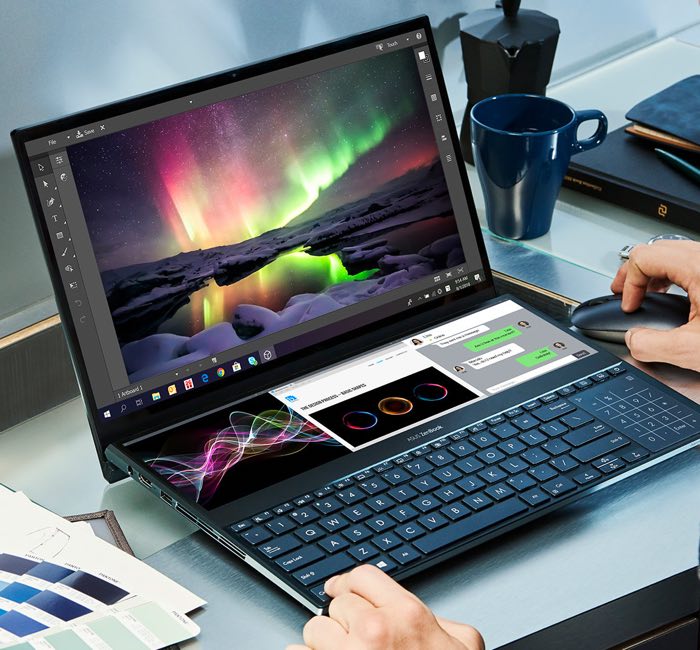
The keyboard sits where a palm rest would normally fit, with the touchpad to the right, where it does double-duty as a backlit number pad. A separate palm rest is included, to sit freely in front.
The whole setup is not the sort of thing you’d want to carry with you everywhere. It’s designed to sit on a desk rather than on your lap, but it’s transportable (rather than portable) and a better option than having to lug around a second display monitor.
Battery life
With high-end speed and dual screens being a main selling point, you won’t want to stray too far from a power outlet – as you’d expect, battery life suffers from having to support two screens and all that processing power. We found we had to recharge in just under 3.5 hours in a worst case scenario heavy usage test that had both screens on at full brightness while playing Full HD video continuously. Turning off the smaller screen added a half-hour of battery life, but that defeats the purpose. Just be sure to stay plugged in most of the time.
Desktop-class performance and features in a more compact package
Cheaper options
While it’s a powerhouse showpiece that’ll make you the envy of your friends, the ZenBook Pro Duo isn’t for the average user. It offers desktop-class performance and features in a more compact package, but at a premium price of $5000 for the top-line model that we tested. There’s also a Core i7-powered model in this size, which will save you a bit.
A less pricey option is the lower-resolution 14-inch full-HD (1920 x 1080 pixels) ZenBook Duo, with 12.6″ secondary touch display, which starts from $1699. Both offer a different level of usability that points the way to an interesting laptop future.

